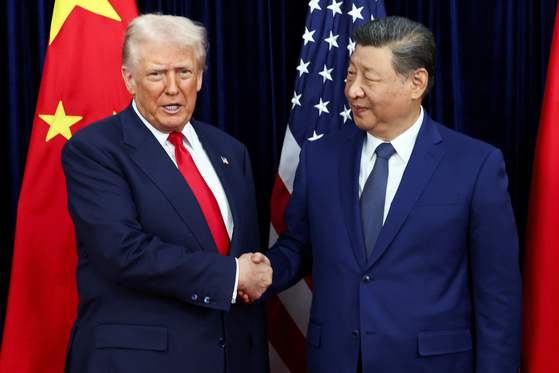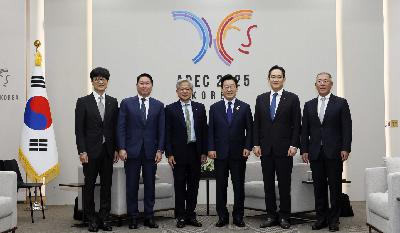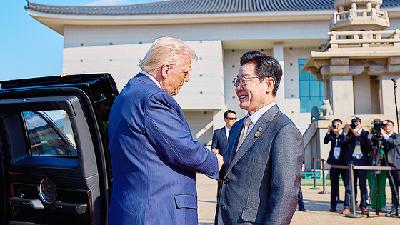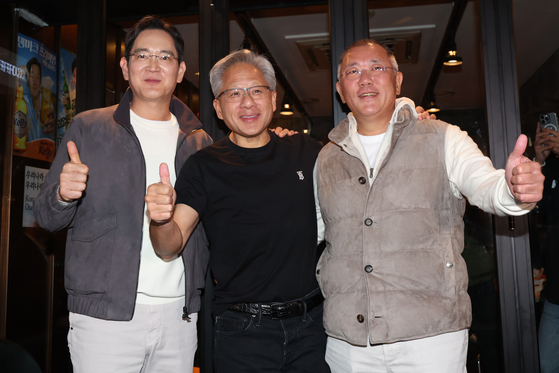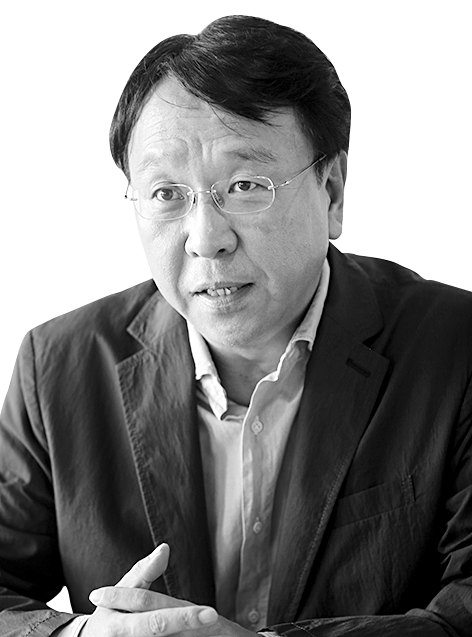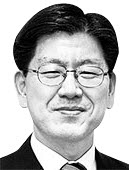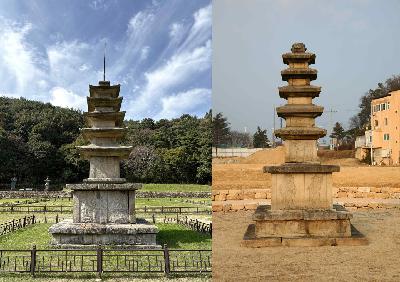APEC by the numbers: Three-fifths of the world's people and two-thirds of its GDP
Update: 2025-10-31
Description
This article is by Michael Lee and read by an artificial voice.
From Friday to Saturday, Korea welcomed leaders of the Asia-Pacific Economic Cooperation (APEC) gathering to the historic city of Gyeongju, the onetime capital of the ancient kingdom of Silla and now a showcase of the country's cultural heritage.
Beyond the usual spotlight that comes with hosting an APEC summit, this year's gathering in Gyeongju carries extra weight. A day after his summit with Korean President Lee Jae Myung on Wednesday, U.S. President Donald Trump held talks with Chinese President Xi Jinping, marking a rare in-person meeting between the leaders of the world's two largest economies.
In addition to Trump and Xi, heads of state and government from around the Pacific Rim are expected to attend, shaping discussions that could influence the future course of one of the most dynamic economic regions on earth.
Founded 1989
By 1986, the format had expanded to include 12 participants - Asean's six member states and six dialogue partners - inspiring then-Australian Prime Minister Bob Hawke to call for a broader framework of cooperation during a visit to Seoul in early 1989.
Just 10 months later, Korea became one of the 12 founding members of APEC, which was formally established in Canberra, Australia. Its secretariat was later set up in Singapore to coordinate the forum's activities and initiatives.
21 member economies
APEC's 21 members include not only countries but also Hong Kong - which joined in 1991 while still a British colony - and Taiwan, which participates as "Chinese Taipei."
Each year, leaders of all 21 economies attend the APEC Economic Leaders' Meeting, hosted by a different member on a rotating basis. A well-known summit tradition - leaders donning attire typical of the host country - has come to symbolize the forum's spirit of cultural exchange and informality.
That same year, the bloc's combined nominal GDP surpassed $64 trillion, underscoring its central role in global growth, trade and innovation.
When the forum returned to Korea in 2005, the Busan Roadmap was adopted, setting out concrete steps toward the "Bogor Goals" of free and open trade and investment in Asia-Pacific.
Two decades later, the 2025 Gyeongju summit gave Korea and President Lee Jae Myung a chance to highlight the country's leadership on issues such as digital transformation, the green economy and inclusive growth.
Xi's last trip to Korea took place in 2014, when then-President Park Geun-hye was in power and relations between Seoul and Beijing were at their peak.
During Xi's state visit to Seoul in July that year, China lent its support to Park's call for improving inter-Korean relations, as outlined in her speech in Dresden, Germany. The two countries concluded their FTA in June 2015, and Park attended a parade in Beijing three months later to mark the 70th anniversary of Japan's defeat in World War II.
Relations deteriorated rapidly, however, following the Park administration's decision to deploy the U.S. Terminal High Altitude Area Defense system in southern Korea, which China claimed could be used to spy on its missile capabilities.
Following the cancellation of events planned by the Chinese Embassy in Seoul during the upcoming APEC summit period, Xi's visit this year was characterized by less pomp than his trip 11 years ago.
Likewise, Trump's first scheduled visit under the Lee administration was brief compared to Lee's extensive trip to the United States in August. The U.S. president departed Korea on Thursday, before the APEC Economic Leaders' gathering kicked off.
Three of them - China, the United States and Indonesia - rank among the five most populous countries in the world. The bloc's demographic diversity, stretching from advanced economies like Japan and Canada to developing ones like Vietnam and Papua New Guinea, gives APEC its unique character as a bridge between different stages of economic development.
Trade remains at the core of APEC's mission...
From Friday to Saturday, Korea welcomed leaders of the Asia-Pacific Economic Cooperation (APEC) gathering to the historic city of Gyeongju, the onetime capital of the ancient kingdom of Silla and now a showcase of the country's cultural heritage.
Beyond the usual spotlight that comes with hosting an APEC summit, this year's gathering in Gyeongju carries extra weight. A day after his summit with Korean President Lee Jae Myung on Wednesday, U.S. President Donald Trump held talks with Chinese President Xi Jinping, marking a rare in-person meeting between the leaders of the world's two largest economies.
In addition to Trump and Xi, heads of state and government from around the Pacific Rim are expected to attend, shaping discussions that could influence the future course of one of the most dynamic economic regions on earth.
Founded 1989
By 1986, the format had expanded to include 12 participants - Asean's six member states and six dialogue partners - inspiring then-Australian Prime Minister Bob Hawke to call for a broader framework of cooperation during a visit to Seoul in early 1989.
Just 10 months later, Korea became one of the 12 founding members of APEC, which was formally established in Canberra, Australia. Its secretariat was later set up in Singapore to coordinate the forum's activities and initiatives.
21 member economies
APEC's 21 members include not only countries but also Hong Kong - which joined in 1991 while still a British colony - and Taiwan, which participates as "Chinese Taipei."
Each year, leaders of all 21 economies attend the APEC Economic Leaders' Meeting, hosted by a different member on a rotating basis. A well-known summit tradition - leaders donning attire typical of the host country - has come to symbolize the forum's spirit of cultural exchange and informality.
That same year, the bloc's combined nominal GDP surpassed $64 trillion, underscoring its central role in global growth, trade and innovation.
When the forum returned to Korea in 2005, the Busan Roadmap was adopted, setting out concrete steps toward the "Bogor Goals" of free and open trade and investment in Asia-Pacific.
Two decades later, the 2025 Gyeongju summit gave Korea and President Lee Jae Myung a chance to highlight the country's leadership on issues such as digital transformation, the green economy and inclusive growth.
Xi's last trip to Korea took place in 2014, when then-President Park Geun-hye was in power and relations between Seoul and Beijing were at their peak.
During Xi's state visit to Seoul in July that year, China lent its support to Park's call for improving inter-Korean relations, as outlined in her speech in Dresden, Germany. The two countries concluded their FTA in June 2015, and Park attended a parade in Beijing three months later to mark the 70th anniversary of Japan's defeat in World War II.
Relations deteriorated rapidly, however, following the Park administration's decision to deploy the U.S. Terminal High Altitude Area Defense system in southern Korea, which China claimed could be used to spy on its missile capabilities.
Following the cancellation of events planned by the Chinese Embassy in Seoul during the upcoming APEC summit period, Xi's visit this year was characterized by less pomp than his trip 11 years ago.
Likewise, Trump's first scheduled visit under the Lee administration was brief compared to Lee's extensive trip to the United States in August. The U.S. president departed Korea on Thursday, before the APEC Economic Leaders' gathering kicked off.
Three of them - China, the United States and Indonesia - rank among the five most populous countries in the world. The bloc's demographic diversity, stretching from advanced economies like Japan and Canada to developing ones like Vietnam and Papua New Guinea, gives APEC its unique character as a bridge between different stages of economic development.
Trade remains at the core of APEC's mission...
Comments
In Channel






